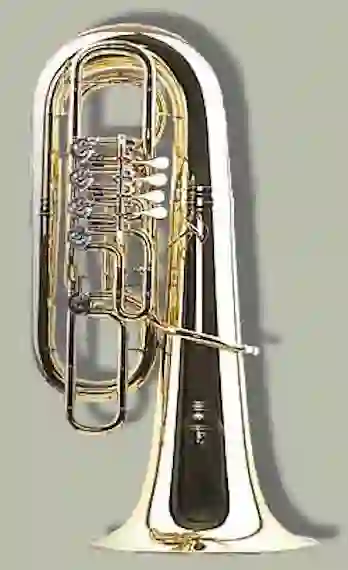Historical development of the Bass tuba - Philipp Dangas
Historical development of the Bass tuba
The Latin term "tuba" (from tubus = tube) originally refers to all straight, i.e. neither twisted nor bent horn instruments of antiquity, especially the tuba of the Romans.
In the history of modern orchestral instruments, the tuba plays an important role as the indirect predecessor of the busine, the main instrument of today's horns, trumpets and trombones. In the history of the development of European musical instruments, the term "tuba" appears throughout the centuries as a name or collective name for the most diverse types of wind instruments. It is the lowest of all common brass instruments. It has 3 to 6 valves and is one of the horn-like instruments due to its wide scale length and the correspondingly conical bore.
The first tubes were developed in Berlin around 1835, shortly after the invention of valve technology. This year, Wilhelm Wieprecht and Carl Wilhelm Moritz received a patent for a bass tuba in F with 5 valves. In the orchestra, the tuba is usually single, more rarely double. The tuba player himself decides whether a part is to be played with the bass or contrabass tuba based on a few aspects (e.g. pitch, volume, composer's wishes, sound conception, etc.). An orchestral tuba player must master both types of tuba with virtuosity. In German-speaking countries, the so-called alternation form has prevailed, i.e. the tuba player alternates between bass tuba (F) and contrabass tuba (Bb).
[music by Shostakovich, Dmitri]
Download size: 173 kilobytes
Table summary of bass tuba usage in music
The table below shows the use of the bass tuba in music shown. Musical works are performed with the name of the composer and the work.

The bass tuba in large scale
In the Roman Empire, tuba was the name for a wind instrument made of bronze.
Today, a tuba is understood to be the bass instrument of the bugle family. The first tubes were developed in Berlin around 1835, shortly after the invention of valve technology.
Wilhelm Wieprecht and Carl Wilhelm Moritz received a patent for a bass tuba in F with five valves that year.
Internal search function
| Name | Value | Delete |
|---|